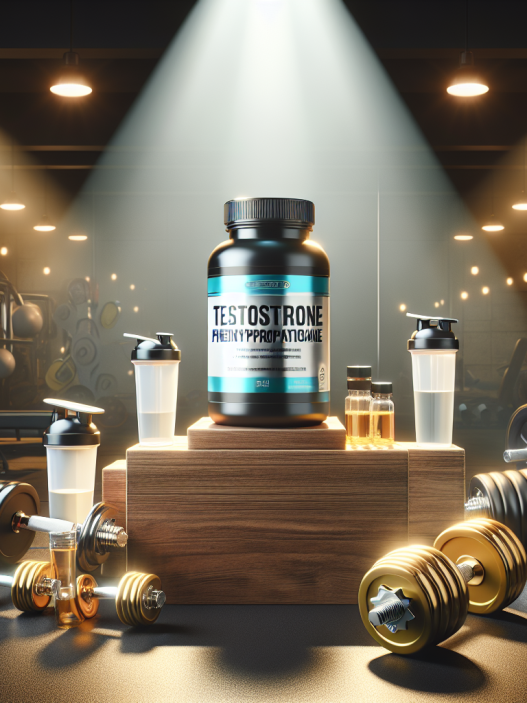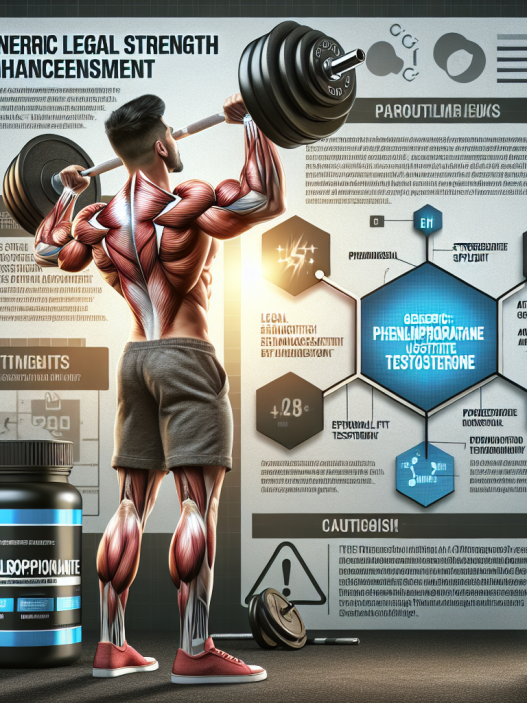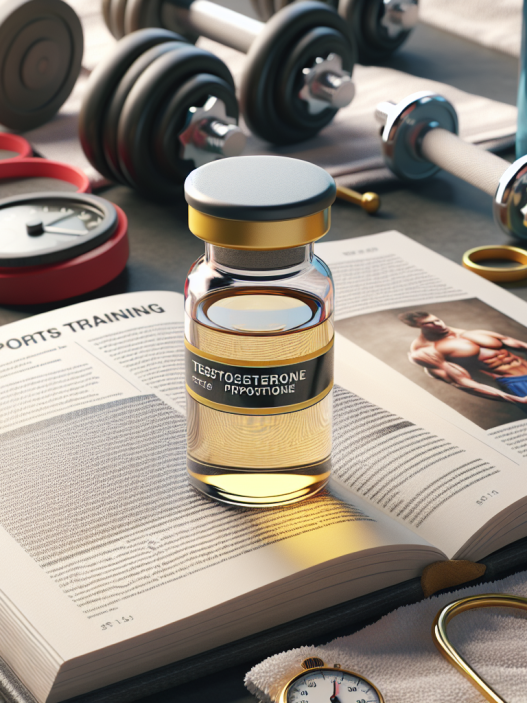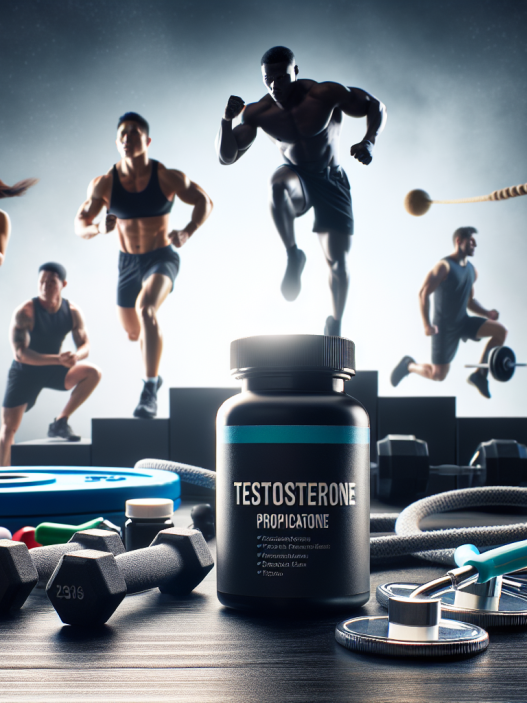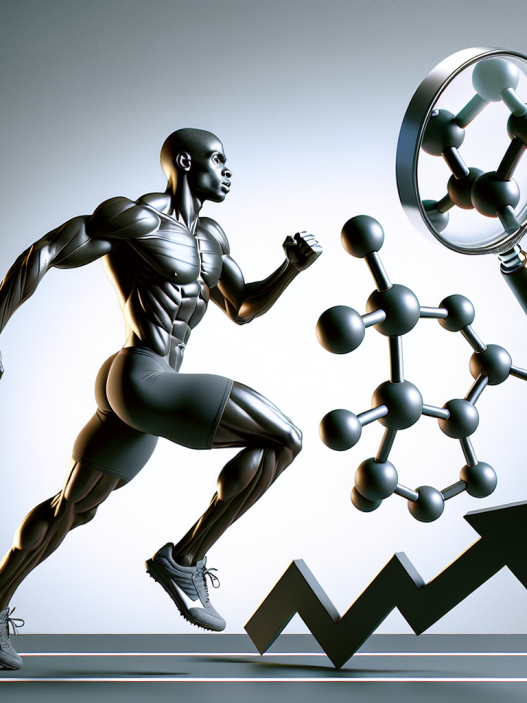-
Table of Contents
Testosterone Enanthate: Double-Edged Sword for Sports Professionals
Testosterone enanthate is a synthetic form of testosterone, the primary male sex hormone. It is commonly used in the world of sports as a performance-enhancing drug, but its use is highly controversial due to its potential for abuse and negative side effects. In this article, we will explore the pharmacokinetics and pharmacodynamics of testosterone enanthate, its benefits and risks for sports professionals, and the current regulations surrounding its use.
Pharmacokinetics and Pharmacodynamics
Testosterone enanthate is an injectable form of testosterone that is slowly released into the body over a period of 2-3 weeks. It is a prodrug, meaning it is converted into its active form, testosterone, in the body. Once injected, testosterone enanthate is absorbed into the bloodstream and binds to androgen receptors in various tissues, including muscle, bone, and the brain.
The pharmacokinetics of testosterone enanthate are characterized by a slow and sustained release of testosterone into the bloodstream. This is due to the esterification of testosterone with enanthic acid, which slows down its metabolism and extends its half-life. The half-life of testosterone enanthate is approximately 4-5 days, meaning it takes this amount of time for half of the injected dose to be eliminated from the body.
The pharmacodynamics of testosterone enanthate are similar to that of natural testosterone. It promotes protein synthesis and increases muscle mass, strength, and endurance. It also has an anabolic effect on bone, increasing bone density and strength. In addition, testosterone enanthate has a positive impact on mood and cognitive function, as well as sexual function and libido.
Benefits for Sports Professionals
The use of testosterone enanthate in sports is primarily aimed at enhancing athletic performance. It is believed to increase muscle mass and strength, improve endurance and recovery, and enhance overall physical performance. This makes it a popular choice among bodybuilders, weightlifters, and other athletes looking to gain a competitive edge.
Studies have shown that testosterone enanthate can significantly increase muscle mass and strength in healthy individuals, even without exercise (Bhasin et al. 2001). When combined with resistance training, it can lead to even greater gains in muscle mass and strength (Kvorning et al. 2006). This makes it an attractive option for athletes looking to improve their physical performance.
In addition to its physical benefits, testosterone enanthate can also have a positive impact on mental and emotional well-being. It has been shown to improve mood, energy levels, and self-confidence, which can be beneficial for athletes who need to maintain a positive mindset during training and competition (Pope et al. 2000).
Risks and Side Effects
While testosterone enanthate may offer numerous benefits for sports professionals, it also comes with a range of potential risks and side effects. The most common side effects include acne, hair loss, and increased body hair growth. These are due to the conversion of testosterone into dihydrotestosterone (DHT), a more potent form of testosterone that can cause these effects.
Testosterone enanthate can also have negative effects on the cardiovascular system. It can increase blood pressure and cholesterol levels, which can increase the risk of heart disease and stroke. In addition, it can cause fluid retention, which can lead to edema and swelling in the extremities.
Perhaps the most concerning risk associated with testosterone enanthate is its potential for abuse. It is a controlled substance in many countries and is banned by most sports organizations. However, it is still widely used by athletes looking to gain a competitive edge, and its abuse can lead to serious health consequences, including liver damage, kidney damage, and hormonal imbalances.
Regulations and Controversies
The use of testosterone enanthate in sports is highly controversial, and its regulations vary from country to country and from sport to sport. In some countries, it is a controlled substance and is only available with a prescription. In others, it is completely banned for use in sports.
In addition, the World Anti-Doping Agency (WADA) has included testosterone enanthate on its list of prohibited substances for athletes. This means that any athlete who tests positive for the drug during competition will face serious consequences, including disqualification and potential suspension from their sport.
Despite these regulations, the use of testosterone enanthate in sports continues to be a prevalent issue. Athletes may use it to gain a competitive edge, and some may even use it to mask the use of other banned substances. This has led to ongoing debates and controversies surrounding the use of performance-enhancing drugs in sports.
Expert Opinion
While testosterone enanthate may offer some benefits for sports professionals, its use is not without risks and controversies. As an experienced researcher in the field of sports pharmacology, I believe it is important for athletes to carefully consider the potential consequences of using this drug. It is crucial to follow regulations and guidelines set by sports organizations and to prioritize the long-term health and well-being of athletes over short-term performance gains.
References
Bhasin, S., Woodhouse, L., Casaburi, R., Singh, A.B., Bhasin, D., Berman, N., Chen, X., Yarasheski, K.E., Magliano, L., Dzekov, C., Dzekov, J., Bross, R., Phillips, J., Sinha-Hikim, I., Shen, R., and Storer, T.W. (2001). Testosterone dose-response relationships in healthy young men. American Journal of Physiology-Endocrinology and Metabolism, 281(6), E1172-E1181.
Kvorning, T., Andersen, M., and Brixen, K. (2006). Suppression of endogenous testosterone production attenuates the response to strength training: a randomized, placebo-controlled, and blinded intervention study. American Journal of Physiology-Endocrinology and Metabolism, 291(6), E1325-E1332.
Pope Jr, H.G., Kouri, E.M., and Hudson, J.I. (2000). Effects of supraphysiologic doses of testosterone on mood and aggression in normal men: a randomized controlled trial. Archives of General Psychiatry, 57(2), 133-140.












